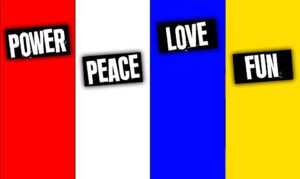What is the Red Color Code Personality Type?
The Red Color Code Personality Type’s driving motivation is Power; they crave it and want things their way!
Red Personality Type cross-reference
- Keirsey Type – Rationals
- Temperament Type – Choleric
- Animal Type – Lion
- DISC Type – Dominant
- Socio-Communicative Type – Driver
- True Colors – Green
- Personality Compass – North
- Occupational Type – Enterprising
- Learning Type – Activist
- Leadership Type – Dominator
MBTI Personality Types (xNTx) – Intuition and Thinking
Enneagram Types
- Type 1 – The Reformer (ENTJ, INTJ)
- Type 3 – The Achiever (ENTP)
- Type 5 – The Investigator (INTJ, INTP)
- Type 7 – The Enthusiast (ENTP)
- Type 8 – The Challenger (ENTJ)
Red Personality Type Careers
What are the Color Code Personality Types?
Dr. Taylor Hartman created The Color Code Personality Type, or The People Code, which classifies Personality Types by Core Motives.
It helps you understand an individual’s motives and the “Why people do what they do” to gain insight into people’s behavior and build more effective relationships with the people you interact with regularly.
The system helps you recognize your innate strengths and limitations and shows you how to use those traits in your personal and professional life.
The Color Code Personality Type system is similar to the four core Personality Temperaments. Still, it focuses more on the individual’s core motivations.

Personality Temperaments, Traits, and Types
Personality Temperaments, Personality Traits, and Personality Types are used in Psychology to discuss a person’s Personality, a collection of Emotions, Perceptions, and Actions that interact with each other, regulate themselves, and shape a dynamic system that forms a person’s Behavioral Patterns.
Your inherited traits (your personality Temperance) and acquired traits (such as education, socialization, and other various pressures and aspects) form your Personality.
A Personality Type identifies a specific collection of Traits, both learned and natural, that comprise a broad, general Personality Classification—a way of labeling a collection of traits and behaviors.
A Personality Trait remains consistent and stable over time, which means you exhibit the same pattern across different situations and throughout your life.
Three criteria characterize Personality Traits: (1) consistency, (2) stability, and (3) individual differences. For example, if you are talkative at home, you also tend to be talkative at work. And if you were talkative at age 20, you would still be chatty at age 40.
Personality Temperament is your “Naturally Intuitive” biological Trait. These Traits are partly inherited from your genes and partially determined by your brainstem, which doesn’t change throughout your life. These are Natural Traits regarded as innate or inborn and not learned.
Your Personality Temperament is formed as an infant and is hard to modify, manipulate, or change because it is genetic. In some way or another, your inherited behavioral tendency will always be there.
Personality Traits are quantitative differences between people, and Personality Types are qualitative differences between people. The most crucial difference between the Trait Theory and the Type Theory is that the Type Theory views people’s characteristics as discrete categories. In contrast, the Trait Theory views these characteristics as a continuum.
For example, while a Type Theorist would claim that introverts and extraverts are two types of people, a Trait Theorist claims that extraversion is a gradient, and individuals can fall somewhere in the middle.
Your Temperaments, along with acquired Traits, form your Personality.
Red Characteristics

- Reds are highly committed to their causes and accomplish whatever life places before them.
- They are visionaries – They look toward the future and take the steps necessary to make them successful.
- Reds are known as insensitive and selfish.
- They are proud and known to parade their values and opinions in the faces of all others.
- Reds appear solid and sure of themselves – Few people are willing to confront them.
- They sense what is right.
- Red is highly critical of other people.
- Reds must be right.
- They are daring and bold.
- Reds are opinionated and stubborn.
- Reds are calculating and manipulative to control lives and produce results.
Reds want to be productive.
Reds like to work—in school, their careers, and their relationships.
Don’t expect them to attach the same importance to things other people care about—like schooling, careers, and marriages. But give them a reason to produce and watch them take off.
Red-type people like to get the job done and are often workaholics, but they resist being forced to do anything that doesn’t interest them.
Reds want to look good to others.
Reds need to appear knowledgeable and crave approval from others for their intelligence and insight. They want to be admired for their logical, practical minds.
Reds want to be respected even more than they want to be loved. They are unmoved by tears and other displays of weakness.
When you deal with a Red, be precise and factual.
Reds shouldn’t be taken too seriously.
Despite their antagonistic demeanor, reds often state the facts as they see them.
Blues, Whites, and Yellows often become greatly concerned over issues raised by Reds, only to discover later that the Reds were merely interested in debating.
They enjoy a good power play. However, once you get emotionally involved in arguing issues, you may be disappointed and frustrated to find that a Red is no longer interested.
Reds seek leadership opportunities.
Despite the rigidity of the military, many young Red men and women select it as a career to experience leadership.
They are often called control freaks and like to be in the driver’s seat.
Red children are often frustrated in school because teachers (usually Blue personalities) won’t let them take charge.
Strengths
- Natural leader.
- Operates in a very logical, sensible manner.
- Makes decisions quickly and easily.
- Self-motivated.
- Quick with sound advice and direction.
- Strong sense of independence.
- Excels with logical thinking.
- They are committed to a productive lifestyle.
- Dynamic and direct.
- Thrives on independence.
- Highly resourceful (strong survivor).
- Creative in crisis.
- Direct and quick with suggestions.
- Great in emergencies.
- Direct and quick with disasters.
- Promotes group activities.
- Engages in conflict comfortably and directly.
- Productive in solving dilemmas.
Weaknesses
- Out of touch with own feelings.
- Insensitive and tactless.
- Blames others for personal misfortunes.
- They dislike being told what to do.
- Poor listener.
- Enters friendship, asking, “What’s in it for me?”
- Demanding and arrogant.
- Promotes turmoil and conflict when a personal goal is to be gained.
- Out of touch with own feelings.
- Renationalizes and denies own failings.
- Always right.
- Cannot relax and feel comfortable unless producing something.
- Often arrogant and defiant or authority.
- Inconsiderate of others’ feelings (selfish).
- Inpatient with others.
- Insensitive and unemotional.
- They don’t like to admit the need for friendship.
- Remains detached from sharing self ultimately.
- Listens only when convenient.
- Maintains mostly rational friendships.
- Tries to control group activities.
- Expect friends to do things their way.
- Won’t admit inadequacies for fear of losing Power and control.
- Negative, critical, and judgmental of others.
- They feel it is more important to be correct than agreeable.
- Blunt or rude when angered.
- Boring.
- Expect to be entertained while waiting for the action to begin.
- Stubborn.
- Denies any personal inadequacies of responsibility.
Red Communication Style
Do’s
- Present issues logically.
- Demand their attention and respect.
- Do your homework!
- Be direct, brief, and specific in conversation.
- Be productive and efficient.
- Offer them leadership opportunities.
- Verbalize your feelings.
- Support their decisive nature.
- Promote their intelligent reasoning where appropriate.
- Be prepared with facts and figures.
- Respect their need to make their own decisions their way.
Don’ts
- Embarrass them in front of others.
- Argue from an emotional perspective.
- Always use an authoritarian approach.
- Use physical punishment.
- Be slow and indecisive.
- Expect a personal and intimate relationship.
- Attack them personally.
- Take their arguments personally.
- Wait for them to solicit your opinion.
- Demand constant social interaction (allow for alone time).

